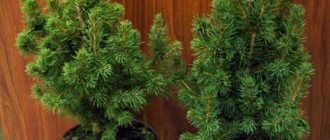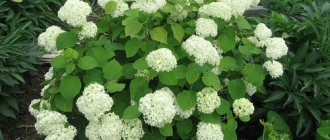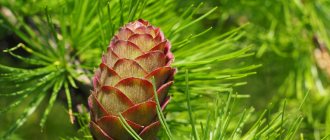Description of the crown
A herbaceous plant with delicate green leaves and stem. The leaves are attached to the stem from below and grow large, spreading along the ground. Small white flowers, vaguely reminiscent of a lily, with six petals collected in clusters of inflorescences on a thin long peduncle. Small yellow stamens look contrasting against the white background of the petal. Flower diameter 4 cm, minimum 1 -1.5 cm. A total of 70 species of broom are cultivated.
The following types are most popular in Russia:
- Anthericum ramosum – branched corolla;
- Anthericum liliago - corolla liliago or simple, lily
Branched corolla
Branched corolla flower Anthericum ramosum photo flower beds
The branched corolla is common in the wild in the southern lands of Europe and Russia. It grows on rocky slopes and in mountain gorges, sometimes it can be found in meadows and very rarely in the forest zone. The stem reaches a height of up to half a meter. Leaves protruding in different directions spread along the ground, reaching a length of 70 cm.
Individual flowers are collected in racemes, one with a diameter of 1 cm to 2 cm. Active development begins in the spring, when the sun begins to warm up, and until mid-September - until the first frost. The inflorescences begin in July, pleasing the eye with delicate flowers for 1-1.5 months.
Corolla liliago, simple, lily
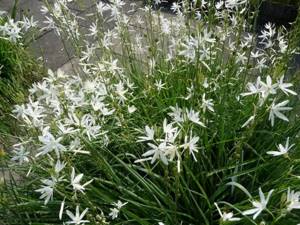
Corolla simple lily herbaceous plants for open ground
It grows naturally in the Mediterranean lands, Asia, and western Europe. Loves sunny meadows, light undergrowth, small hills and hills. This flower is slightly larger than the one described above, the stem stretches up to 60 -70 cm. The size of a single flower is from 3 to 4 cm. The brush consisting of these flowers can contain up to 20 flowers, which are supported on short, thin pedicels.
The inflorescence has a pleasant aroma, attracting insects for pollination. Long spreading leaves, have a densely rich green color, grow up to 45 - 50 cm. 5 - 6 cm wide.
Simple broom
Widely distributed in the Mediterranean, Asia Minor, Western Europe and other regions. It can be found in meadows, sparse forests, at the foot of mountains and hills.

This specimen is larger than its relative. The stems grow up to 60 cm, and the size of one flower is 3-4 cm. The white petals resemble stars swaying in the wind with a pleasant, barely noticeable aroma. One brush-shaped inflorescence can contain 10-20 flowers on flexible short stalks.
The spreading leaves are 40 cm long and up to 5 mm wide. The shoots are light and soft.
Growing and caring for corolla
The plants reproduce well both by seeds and by vegetative means, i.e. the usual division of the bush.
How to plant corolla seeds in open ground
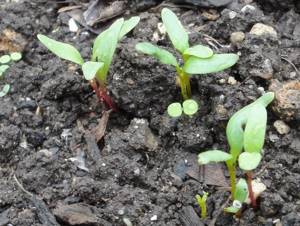
How to sow broom seeds photo
- Seeds are sown in early autumn so that the plants germinate and become established in the ground before wintering.
- At the end of October - beginning of November, when the first frosts occur, it is necessary to cover the plants for the winter with leaves or covering material.
- In the spring, at the end of March - beginning of April, when warm weather sets in, the protective cover is removed to free the seedlings for further growth.
- After sowing, you can expect the first flowers in the second or third year.
It is better to break through densely sown broom leaves, leaving a distance of 8-10 cm between the bushes. Excess seedlings can be planted separately in containers and grown on a windowsill, or a mini-greenhouse can be organized where plants with damaged roots will feel more comfortable and can quickly recover and grow.
How to divide a broom bush

How to divide a broom bush
Growing and care
It propagates well both by seeds and by simply dividing the bush. Seeds should be sown in the ground in the fall so that they have time to strengthen and germinate. With this type of reproduction, the first inflorescences appear after 2-3 years. When dividing the bush, flowering is possible as early as next year, although the corolla will be quite weak at first.
They grow well in any well-drained soil, but planting on calcareous and clay soils with the addition of leaf humus is preferable. In the garden it grows well in sunlit, dry areas or in slight shade. It starts to hurt in dark or damp places.
The bushes are planted to a depth of 10 cm with a distance of 25-35 cm from each other. Since the rhizomes grow quickly, thinning or replanting will be required after 4-5 years. Planting is done at the end of September or in the spring (April-May).
The broom tolerates temperature changes and winters of temperate climates well. During the cold period, the roots do not require additional shelter.
The plant is resistant to diseases and pests and responds well to mineral fertilizers. Requires moderate watering, which must be increased during the flowering period.
Description
The narrow, straw-like leaves explain the name of the plant (the Greek word ανθερικος - straw - is a derivative of the Latin name for corolla). These straw leaves are attached to the plant stem at its very base and, having reached the peak of their growth, spread along the ground. The flowers are white, small (from 1 to 4 cm in diameter), consisting of six petals. The yellow stamens are impossible not to notice - they look so contrasting against the background of white petals. The height of the flowering plant is 40-60 cm. The rhizomes are short, formed into tubers. Transplantation and propagation by division are tolerated “without loss.” In the same way, they can live for a long time in one place.
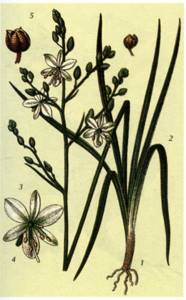
Description of the corolla: stem, flowering, seeds
There are no high requirements for the soil, but nutritious loam is still best suited. This is a sun-loving plant, but it can also grow in the shade. But what he doesn’t like is dampness. Therefore, winters in the northwestern regions are poor. It can be saved by transplanting it to a dry, sunny place and covering it with a spruce tree for the winter.
Corolla is considered a tropical plant because the largest number of species is found in southern Africa, on the island of Madagascar, on the southern continent of America, and in some European countries. And although there are about 70 species, as already mentioned, only 2 species are used as landscape decoration.
Variety of corolla or antericum (video)
Northern summer resident - News, Catalog, Consultations
Name: translated from Greek literally means “multicolor”.
Description: About 70 species are known, growing in Central Europe, Africa and America. Low perennial plants with thin, round, leafless stems and short, fleshy rhizomes. The leaves are located at the base of the stem, narrow, linear. The flowers are star-shaped, white, up to 1.3 cm in diameter, collected in branched paniculate inflorescences. The fruit is a spherical or three-lobed capsule with large, angular black seeds.
Liliago corolla, or simple (common) - Anthericum liliago L.
It grows on rocky hillsides, in meadows, often in floodplains of rivers in the Mediterranean region and the warm-temperate zone of Western Europe, Asia Minor and North Africa. Liliago is the old name for this species.
Very similar to branchy. Plants up to 60 cm tall. The flowers are white, up to 3-4 cm in diameter. The stamens are attached to the base of the tepals and are shorter than them. The pollen is golden yellow. The inflorescence is racemose, simple, bearing 10-20 flowers up to 3.5 cm in diameter, sitting on short, articulated pedicels in the axils of membranous lanceolate bracts. The leaves are narrow-linear, up to 40 cm long and 0.3–0.5 cm wide. Blooms from mid-June for 30 days. Bears fruit. In culture since 1596.
Use for borders or in groups under bushes. Frost-resistant. Simple in culture. Tested: from St. Petersburg to Sukhumi and Karaganda.
Location: prefer bright, fairly dry, well-drained places. Not suitable for areas with cold and damp climates. Light shade does not affect development. They grow in one place for at least 5 years.
Soil: they are unpretentious to the soil, but prefer chipped, calcareous, well-drained soils with the addition of leaf humus.
Care: respond well to mineral fertilizer. Doesn't like transfers. They are not damaged by diseases and pests. Abundant watering is necessary, especially during the flowering period.
Reproduction: by dividing the bush and seeds, which are sown in autumn in open ground ridges. Seedlings bloom in 2-3 years. Large bushes are divided, as they grow very quickly. In the first year after division, plants develop slowly. When planting, the distance between plants should be 25-35 cm. Planting is done in autumn (September) or spring (April - May) to a depth of 10 cm.
Uses: Good plant for border or landscape plantings on the lawn, as well as among sparse trees. Corollas are the best decoration for rockeries, where stones especially emphasize the beauty and originality of these plants. You can also plant them in prefabricated flower beds from drought-resistant plants.
Partners: grown together with irises, phlox, basil, aquilegia.
www.flower.onego.ru
Common lily corolla
Common corolla or lily corolla (lat.Anthericum liliago) prefers western Europe and northern Africa. Liliago corolla (its obsolete name) grows in important soils along rivers. Reaches 60 cm in height, the diameter of snow-white flowers is up to 4 cm.

The place where you grow ornamental shrubs and trees can be decorated with Anthericum liliago, as it is not afraid of shade
Corolla: easy to care for and indispensable for flower beds
Corolla or antericum (lat. Anthéricum) is a perennial plant with a fairly long flowering period. The most common species in Russia are simple corolla and branched corolla. Despite the fact that corolla flowers do not have unforgettable beauty, they are still successfully used in decorating borders, flower beds and rockeries.
What is the reason for their success among flower growers and landscape designers? The fact that inconspicuous and unpretentious corollas favorably emphasize the beauty of other plants that are the accent of a flower arrangement (iris, lupine, delphinium, phlox). The broom can also revitalize those areas of the garden that are in the shade. All this explains why this plant is quickly gaining popularity.
Common lily corolla
Common corolla or lily corolla (lat.Anthericum liliago) prefers western Europe and northern Africa. Liliago corolla (its obsolete name) grows in important soils along rivers. Reaches 60 cm in height, the diameter of snow-white flowers is up to 4 cm.
The place where you grow ornamental shrubs and trees can be decorated with Anthericum liliago, as it is not afraid of shade
How to fertilize
Among organic fertilizers, wood ash is the best option. To make the solution, take 1 liter of water and 2 tbsp. ash. Leave it for one night, and the next morning feed the plant.
Well, as rightly noted in the Polish proverb, “too much is unhealthy.” This means don’t overdo it with fertilizing. Oversaturation of soil with useful organic substances can be harmful.
Once/two weeks during plant development, you can add vermicompost to saturate the soil with nitrogen.
If you notice that the flowering of antericum is weak, then pay attention to watering - maybe it is insufficient? To avoid damaging the leaves, water the antericum early in the morning or before sunset with warm, settled water. During flowering, more water is needed, so take care of it.
Growing broom indoors
The broom is also successfully grown in the house on the windowsill. He loves bright, dry places on the western or eastern side of the house.
If you decide to place a pot with a broom on a south window, then be prepared to hide it from the scorching rays of the sun at midday from spring to autumn.
But in winter, on the contrary, he is afraid of a lack of light and reacts to this by dimming the leaves. Some caring owners turn on the lamp not far (1 m) from the broom for 10 hours a day.
Transplant into another pot only when absolutely necessary (slow growth, not enough room for roots). Carefully transfer the entire earthen ball with roots into another pot and be careful not to damage the roots.
Reproduction
As we have already mentioned, plant propagation occurs both by seeds and by dividing roots. Seeds are sown in autumn. This is done so that they can strengthen and germinate. The disadvantage of this propagation is that you will see the first flowers only after two to three years.
If you propagate corollas by dividing the roots, you will see flowering the next summer, or maybe the same summer, but the plant will be weak and sickly. Divide the corolla bush, which has already grown sufficiently, into two parts with well-developed roots and a ground part.
This should be done in the fall, when the plant has bloomed, or in the spring.
To ensure that the roots of the plant do not interfere with each other’s development, they need to be planted at a distance of 30 cm and to a depth of 10 cm. Breakthrough and replanting will be needed only after 5 years.
Caring for the plant after purchase
The first thing you should pay attention to when buying antericum is the condition of its stem and leaves. Because the sooner you identify diseases and parasites on a plant, the fewer problems you will have with it in the future. Carefully inspect the root rosette of the plant for the presence of small insects - they love to hide there, and getting them out can be problematic. Also inspect the leaves: dried tips, brown spots, dark spots, mold - all these are signs of disease or the presence of pests.
- If you choose a plant when its buds are already ripe, then look for an antericum that has a lot of unopened buds. Formed anthreicum can be inconvenient to transport (we have already mentioned that they reach up to 60cm in height + roots).
- Before planting the plant in the main flowerbed, allow the antericum to recover for about a week. Keep it in quarantine in a pot, covering the roots with soil and treating it with a pest control solution.
- If you prefer to plant antericum with seeds, then when purchasing them, pay attention to the expiration date, their condition and the absence/presence of mold.
By the way, antericum bushes that are often sold bloom only next summer. This may be due to improperly divided roots. They can be easily wounded at the antericum and therefore after transplantation, instead of blooming, it gets sick and takes root. This is why many gardeners prefer to grow corolla from seeds.

Corolla seeds
Growing and Reproduction
The plant is not capricious, and growing and caring for it does not cause difficulties, because it is resistant to insect pests and diseases. Although flowers react negatively to the lack of feeding. It is recommended to use complex fertilizers (organic-mineral), because they quickly enter the soil and preserve life in it.
How to fertilize
Among organic fertilizers, wood ash is the best option. To make the solution, take 1 liter of water and 2 tbsp. ash. Leave it for one night, and the next morning feed the plant. Well, as rightly noted in the Polish proverb, “too much is unhealthy.” This means don’t overdo it with fertilizing. Oversaturation of soil with useful organic substances can be harmful. Once/two weeks during plant development, you can add vermicompost to saturate the soil with nitrogen.
If you notice that the flowering of antericum is weak, then pay attention to watering - maybe it is insufficient? To avoid damaging the leaves, water the antericum early in the morning or before sunset with warm, settled water. During flowering, more water is needed, so take care of it.
Growing broom indoors
The broom is also successfully grown in the house on the windowsill. He loves bright, dry places on the western or eastern side of the house. If you decide to place a pot with a broom on a south window, then be prepared to hide it from the scorching rays of the sun at midday from spring to autumn. But in winter, on the contrary, he is afraid of a lack of light and reacts to this by dimming the leaves. Some caring owners turn on the lamp not far (1 m) from the broom for 10 hours a day.
Caring for the crown
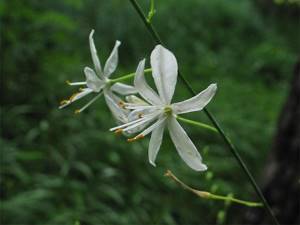
The plant is absolutely not capricious, grows without any problems and surprises with its beauty. Propagated by seeds and division of the bush. Antericum withstands temperature changes.
The plant is quite resistant to diseases and pests.
If there is insufficient nutrition, the beauty of flowers quickly disappears, then it is necessary to take care of sufficient fertilizer for the plant.
Organic mineral fertilizers available on the market can combine the advantages of both types of fertilizers (organic and mineral): a rapid supply of nutrients and preservation of life in the soil. One of the popular organic fertilizers you can use is wood ash. The treatment solution is made as follows: take 1-2 tablespoons of ordinary ash per 1 liter of water and let it sit overnight; in the morning, water the plant with the resulting solution. This fertilizing should be applied with extreme caution, in small portions, to prevent oversaturation of the soil with useful substances. From spring to autumn, you can use nitrogen-containing fertilizers (for example, vermicompost) once every two weeks.
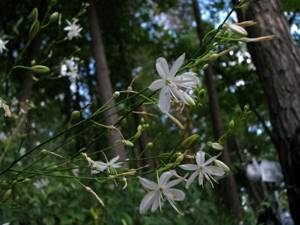
Antericum requires proper, timely watering, which must be increased during the flowering period. Lack of water can also cause poor flowering. It is advisable to water not in bright sun, but early in the morning or evening, since drops on the leaves act like small magnifying glasses and can cause burns.
Main advantages and possible difficulties
Among the main advantages of the broom are:
- They grow well on calcareous soils;
- Unpretentious in choosing a place - sun or slight shade;
- Divided bushes take root with almost 100% probability and grow quickly;
- It is not afraid of pests and copes with diseases with a bang.

One of the advantages of this plant: you most likely won’t have to deal with pests.
Among the difficulties that you may encounter while growing brooms are the following:
- You cannot replant a corolla that has already been planted in open ground;
- It may happen that due to excessive soil moisture or the lack of a drainage system in the soil, the roots of the corolla will begin to rot, and mold will appear on the surface of the soil;
- Due to poor light, poor soil and lack of fertilizing, the plant will bloom poorly with small, rare flowers;
- Being in direct sunlight most of the day and not receiving proper watering will cause the leaves and stems of the plant to become limp and dull;
- Although the corolla has good immunity, it is still better for you to familiarize yourself in advance with ways to combat spider mites, aphids and mealybugs, which rarely attack the corolla.

